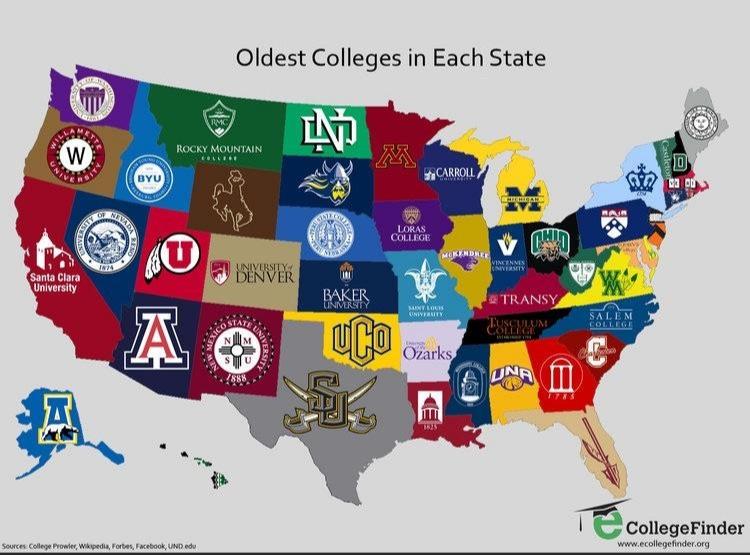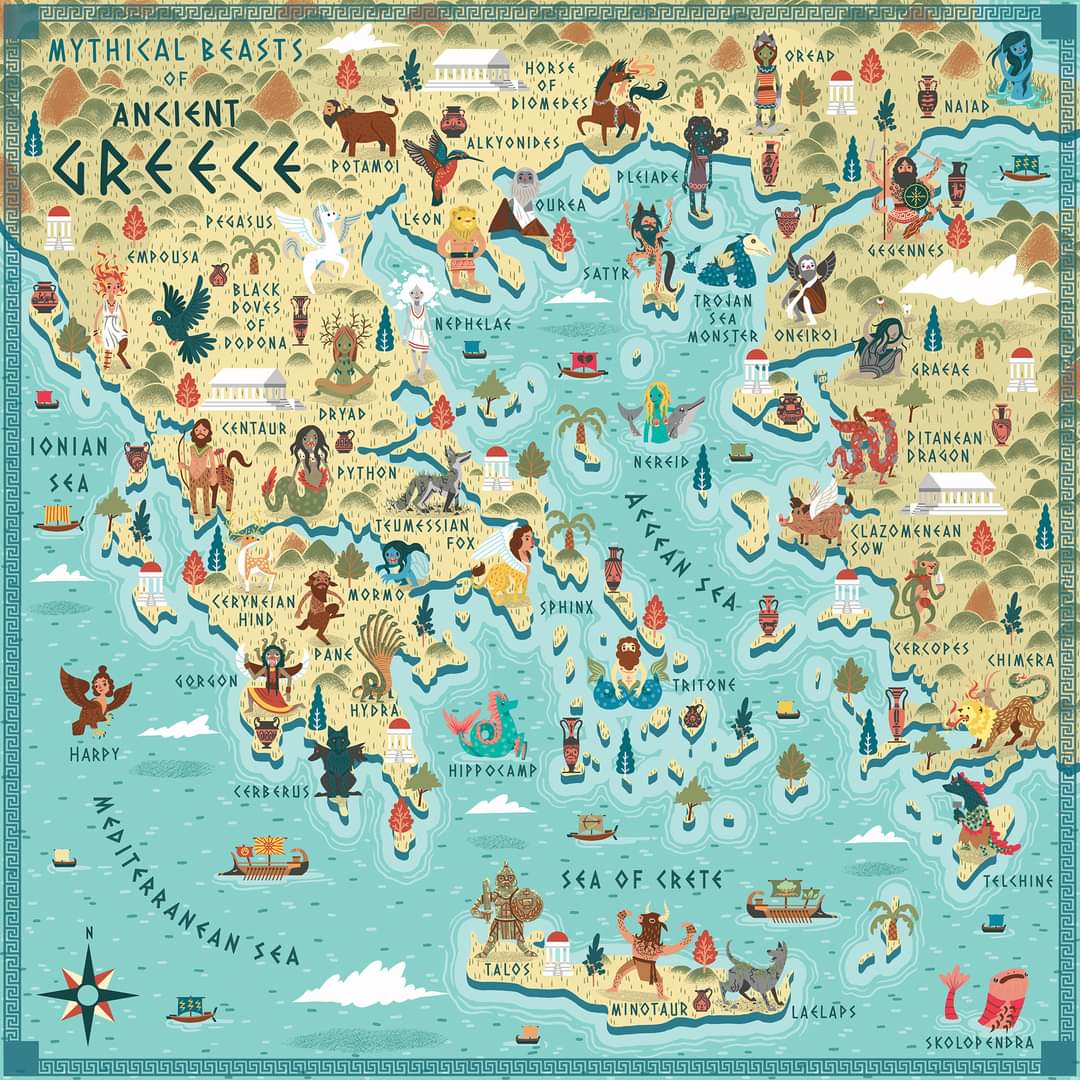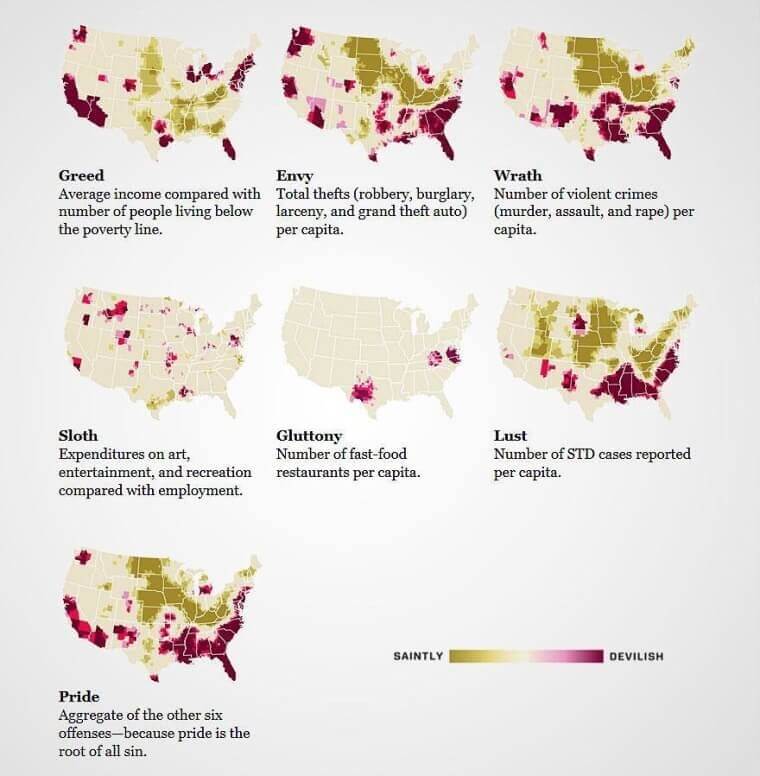You are using an out of date browser. It may not display this or other websites correctly.
You should upgrade or use an alternative browser.
You should upgrade or use an alternative browser.
Awesome Map Thread
- Thread starter tsywake
- Start date
- Latest activity Latest activity:
awaken
Well-known member
KickballDeac
Bernie Eskimo Bro
LOL @ UGA claiming 1785
KennyRogersRoast
Well-known member
Baylor always touts itself as the oldest in Texas.
Highland Deac
Well-known member
- Joined
- Nov 26, 2012
- Messages
- 6,820
- Reaction score
- 721
Salem College is something of a stretch, imo. I believe that it's Salem Academy, the boarding high school connected to the college, that was founded in 1772. The college didn't come along until well over a century later. At least it keeps UNC from being able to claim that it's the oldest college in NC, I guess.
deacvision7
Mod Emeritus
dot com
Well-known member
Are those like the places the beasts lived, or where their origin story came from, or just randomly placed on the map?
deacdiggler
"Well known member"
- Joined
- Mar 28, 2011
- Messages
- 23,901
- Reaction score
- 11,942
that belongs on the meh maps thread
ImTheCaptain
I disagree with you
i mean, the minotaur is on the correct island so i assume they're all roughly where their supposed to "be"
ImTheCaptain
I disagree with you
i mean, the minotaur is on the correct island so i assume they're all roughly where their supposed to "be"
but stuff like harpies and satyrs are just...there
nomadic
Ricky Peral
I don't remember the myth about the monkey knife fight taking place in what is now modern-day Turkey
Looks like an ice cream cone to me.
deacvision7
Mod Emeritus
I don't remember the myth about the monkey knife fight taking place in what is now modern-day Turkey
those cheeky monkeys could turn up anywhere where mischief was happening. looks like some shit was going down around Izmir on this map for some reason
ImTheCaptain
I disagree with you
I don't remember the myth about the monkey knife fight taking place in what is now modern-day Turkey
Cercopes:
As monkeys
In another myth,[10] designed to explain their name ("tail-men" in Greek), Zeus changed the Cercopes into monkeys. This story inspired modern zoologists to name the genus of monkeys depicted in Minoan frescoes as Cercopithecus.
Monkeys figure in four Minoan frescos at Akrotiri, most famously in the crocus-gathering Xeste 3 fresco, where the monkey's ritual aspect, attending an enthroned female, is interpreted by Nanno Marinatos as servants of the divinity, acting as intermediary between humanity and the divine world.[11][12] Green monkeys appear in Crete itself in the "House of the Frescoes" at Knossos,[13] Monkeys are absent from Greek art. In Minoan art, it is assumed that they were exotic pets: "... the monkeys, which were imported to Crete, were pets that would have been placed where they could be seen and used by their owners, rather than simply abandoned in the countryside," concluded Shaw (1993).[14] When Greek mythographers attempted to account for the name Pithecusae (“Ape Islands”) given to Ischia and Procida by the Bay of Naples, where no monkeys had been seen within human memory, they were reduced to alleging that they must have been deceitful men whom Zeus punished by turning them into apes. When scholars attempted to account for this exotic image they have been forced to search farther afield:
The story of Herakles and the Cercopes has been interpreted as a reminiscence of Phoenician traders bringing apes to Greek markets. See O. Keller, Thiere des classischen Alterthums (Innsbruck, 1887), p. 1. The interpretation may perhaps be supported by an Assyrian bas-relief which represents a Herculean male figure carrying an ape on his head and leading another ape by a leash, the animals being apparently brought as tribute to a king. See O. Keller, op. cit., p. 11, fig. 2.[15]
Cline identified the monkey species in 1991[16] as guenons, or blue monkeys, which have bluish fur over their green skins. Scholars generally assume that the appearance of the blue monkey in Aegean iconography was due to the import of the actual animal from north Africa; they were iconic religious animals in Egypt
deacvision7
Mod Emeritus
ImTheCaptain
I disagree with you
the south sucks
the south sucks
Tell all your friends to stop moving here.
And it's The South.
wakephan09
fuck duke
- Joined
- Mar 16, 2011
- Messages
- 29,061
- Reaction score
- 3,232
The South will Super Size again!




